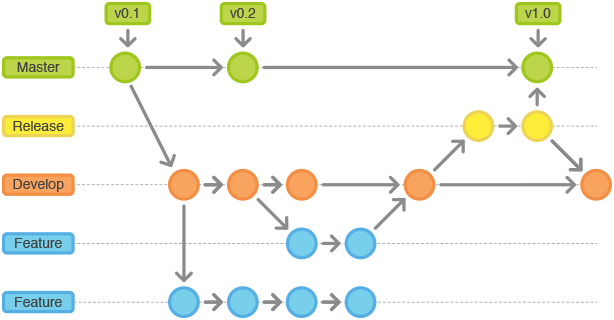

If you didn't like the article or you have an idea for improvement, please reach out to me on Twitter and drop me a DM with feedback so I can improve and provide better content in the future 💪. I am sharing some other tips, articles, and things I learn there. If you enjoyed it and learned something new, support me by clicking the share button below to reach more people and/or give me a follow on Twitter where we can catch up. Project Management System in Laravel with Source Code (Free Download) Use the following command to switch to the dev branch. The checkout command updates the files in the working tree according to the specified branch. Thank you for reading this to the end 🙌. Use the git merge Command to Pull Changes From master Into Another Branch First, we need to switch to the branch we want to work. Git commands even a monkey can understand As shown above, the change added on 'issue1' described in the previous page isnt included in myfile.


git checkout master Switched to branch master Before merging, open myfile.txt and check the content of the file. I don't recommend blindly use rebase to keep your feature branches up to date but for larger projects, my preference is to use rebase instead of merge. Finally, the merge command takes the given commit, which you can name as origin/master, and does whatever it takes to bring in that commit and its ancestors, to. To merge commits into the master branch, lets now switch over to the master branch. With it, we don't have to resolve the same conflict all over again. A custom token may be useful if performing actions that require Administrative privileges, such as overriding branch protection rules. This can be the Token provided by GitHub Workflows, or a custom token set at a workflow secret. Moreover, any rebase operation on the feature branch (maybe for change. Required - The GitHub Personal Access Token used to perform the merge action. My understanding is the most appropriated would be to rebase the feature branch, so the branch history don't get dirty with a lot of meaningless merge commits. it can result in fixing the same conflict for every commit in the feature branch - for this one, I find really useful the git rerere configuration which is saving the resolved conflicts and then reusing them. Often I see someone merging the master branch into a feature branch in order to update it with the last changes.we are losing the chronological order - IMO this is not a problem at all because we achieve a series of intentional changes that are made to master branch.git checkout feature git merge master git revert r1 -m. it can be confusing for less experienced Git users We are going to merge master into feature branch (again), and then make a second revert commit there.Lets check out the master branch: git checkout master And lets merge the testing branch into master: git merge testing Notice that it does a fast-forward merge. There are a couple of things to keep in mind though: Since we just merged the master branch into our testing branch, we should be able to cleanly merge the testing branch into the master branch as well. ability to easily change our feature branch history.long tramlines from long-lived feature branches.making the history in our master branch much easier to follow because it is linear.


 0 kommentar(er)
0 kommentar(er)
